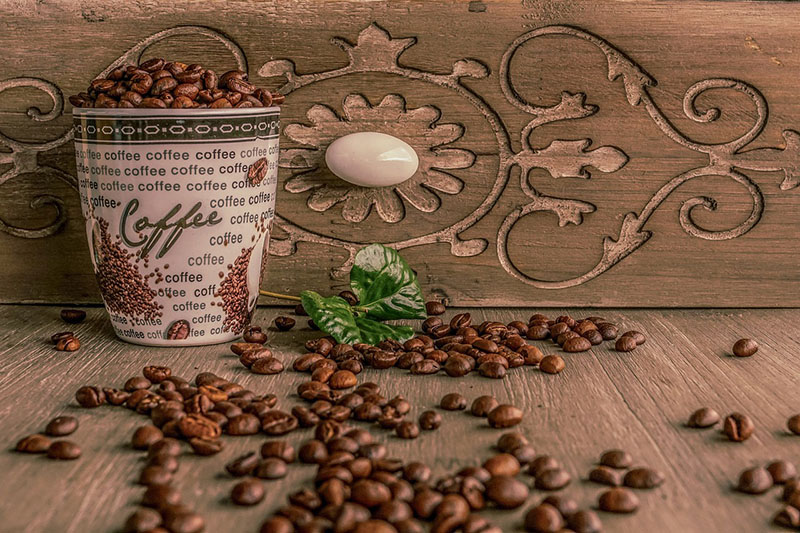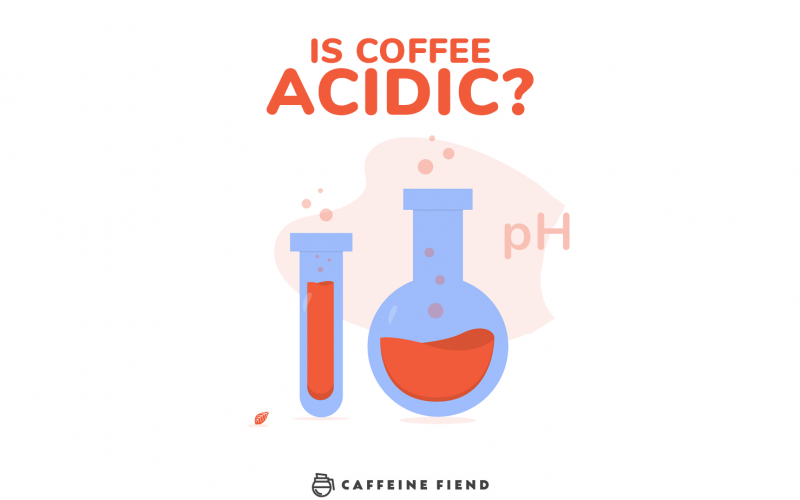Is coffee acidic? Short answer – yes.
However, orange juice and some bottled water are acidic. So the real question should be – “How acidic is coffee?”
If you’ve ever read a coffee review then you’ve probably seen the author describe the acidity of the coffee by using a diverse selection of words. Sharp, fruity, lively, energetic, and tangy are just a few of these words.
However, if you’re new to the world of coffee, all of these varied descriptive words may seem confusing. After all, your chemistry teacher in high school never used “fruity” or “lively” when they were talking about hydrochloric acid.
What Does Acidity Mean in The Culinary World?
If you’re talking about the food in your kitchen or your talking about chemical compounds in a lab, the term acidity will generally have the same meaning. This is why substances like drain cleaner and battery acid can be ranked on the pH scale along with foods like tomatoes and coffee.
What Exactly Is The pH Scale?
This is a gradated scale that is used to classify just how basic or acidic a water soluble substance truly is.
The pH scale ranges from 0 to 14; with 0 being the highest acidic rank and 14 being the highest basic rank. With a pH of 7, pure water straddles the line between these two extremes.
So, Is Coffee Acidic?
No two types of coffee taste the same; that is one of the reasons why the coffee market is oversaturated with an innumerable amount of coffee varieties.

The acidity of coffee is also something that varies between both brews and beans. Still, if someone asks you “Is coffee acidic?”, you can just tell them that it has an average rank of 5 on the pH scale (more specifically between 4.85 and 5.13).
But What Makes Coffee Acidic?
A modest cup of black coffee may seem simple compared to the wide array of coffee concoctions that people have been creating over the years; however, on a chemical level it is actually relatively complex.
Even it its most basic form, brewed coffee is a complex mixture that is made up of over 800 compounds. More than a few of these compounds are acids, with the major ones being (from lowest to highest concentration):
- Palmitic acid
- Linoleic acid
- Phosphoric acid
- Malic acid
- Lactic acid
- Acetic acid
- Citric acid
- Quinic acid
- Chlorogenic acid
Why Are Some Types of Coffee More Acidic Than Others?
There are several factors that contribute the overall acidity of a particular coffee bean.
Two of the primary factors are the species and variety (cultivar) of the coffee. Although there are well over 100 recorded species of the coffea plant, just two species make up the majority of the world’s coffee consumption. These two species are Arabica (Coffea arabica) and Robusta (Coffea canephora).
Arabica is considered by many to be more acidic. Also, the highest estimates state that Arabica makes up around 80% of the global coffee market.
Still, even specific varieties within these species have varying levels of acidity. This is a blend of both genetics and the overall growing conditions. Speaking of which…

Soil, Elevation, Climate and More
If you’re growing coffee, then you’re going to need some dirt to plant it in. However, did you know that the soil actually contributes to the taste of the coffee.
The soil in two different countries, cities, or gardens will have different levels of acidity. In addition to this, farmers and gardeners will often tweak the acidity of their soil to their liking.
Many coffee growers (like those in the Blue Mountains) will often boast about factors like elevation and climate. One of the main reasons why these two factors are something to brag about is because they mean the coffee is likely grown in a cooler temperature.
Coffee ripens slower when the temperature is colder and many experts agree that this produces more elaborate flavors. Coffee that is brewed from these beans also tends to be more acidic.
The Battle of Acidity – Coffee vs. Other Drinks
We’ve already established that coffee ranks at a 5 on the pH scale but in order to put this into perspective we need something to compare it to. Pure water is a 7 on the pH scale, which makes it neutral, so what about other beverages.
According to the American Dental Association (ADA) the pH of some common commercially available beverages are:
- Dr. Pepper – 2.88
- Sprite – 3.24
- Tomato Juice – 4.01
- Coca Cola – 2.37
- Lemon juice – 2.25
- Aquafina water – 6.11
- Pepsi – 2.39
- Gatorade Orange – 2.99
- Redbull – 3.43
- Starbucks Medium Roast – 5.11
Remember, a lower pH means higher acidity. For example, battery acid has a pH of around 0.7 and your stomach acid ranges from 1 pH to 2 pH.
Coffee’s pH of 5 seems tame in comparison to most of the beverages that are listed above. Instead of asking “Is coffee acidic?”, people should be asking about sodas, energy drinks, and even fruit juices.

How Can I Make My Coffee Less Acidic?
Remember when we said that factors like variety, soil, and temperature can affect a coffee’s acidity? Well, there are other factors that you can consider – both in the store and in your kitchen – if you want to make your cup of coffee less acidic.
Stop Grinding So Fine
Believe me, I understand the satisfaction that comes from having an even and fine grind. However, studies have shown that during the coffee brewing process, more acid is extracted if your grind is finer.
Brew Up Something Colder
If you’re a hot coffee fan that is concerned about acidity, it may be in your best interest to try and get a taste for cold-brewed coffee. This is because cold-brewed coffee has a significantly lower level of acidity compared to its hot counterpart.
Remember the Roast
When it comes to roasting, there are two factors to consider; the roasting temperature and the roasting duration. If you choose beans that have been roasted at hotter temperatures and for longer periods, then you’re going to have coffee that is less acidic.
Add Some Milk
Remember, most people aren’t simply drinking black coffee when they pour themselves a cup. BY adding milk or cream to your cup you are already altering the pH levels of your beverage – making it less acidic.


1 comment
Thanks! Knowing coffee’s pH and and where it fits into the context of other common drinks is very helpful.